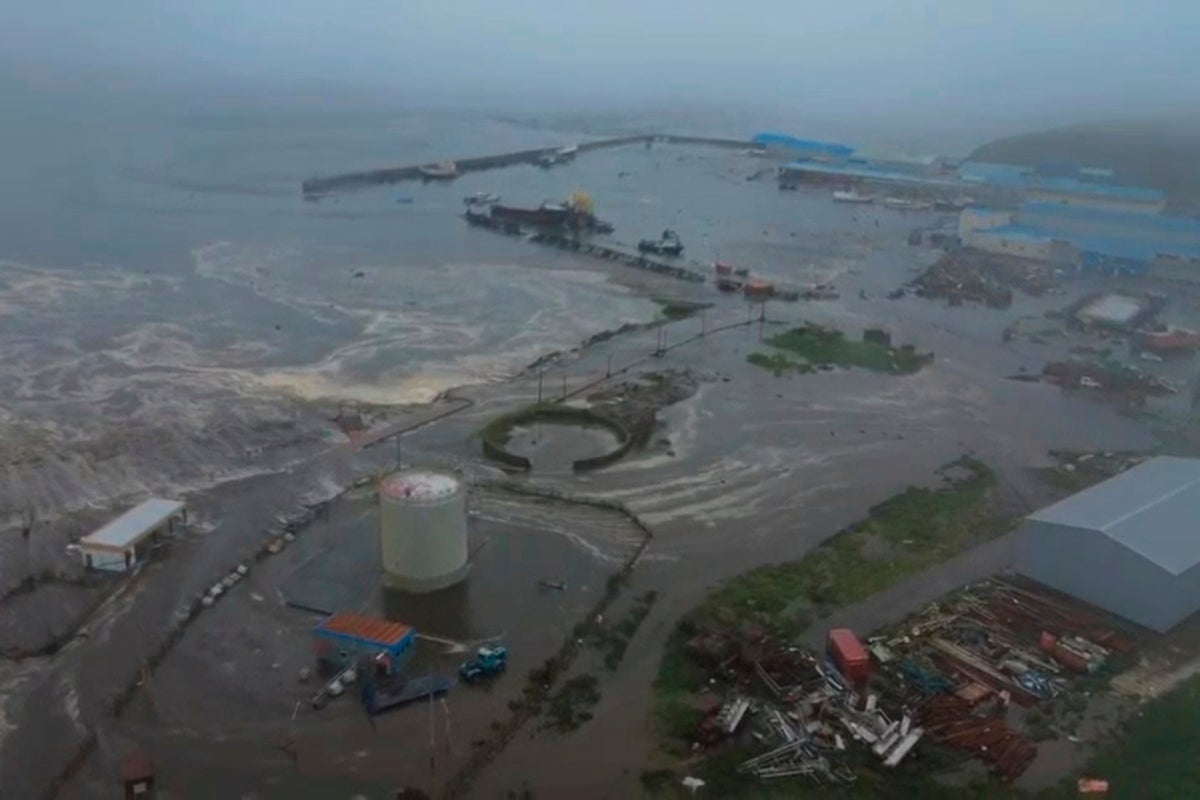A recent seismic event of immense power struck off Russia’s remote Far East coast, unleashing a formidable tsunami that inundated a fishing port and caused widespread panic. Yet, in a testament to robust disaster preparedness and swift emergency response, the region remarkably avoided the extensive damage and high casualties typically associated with such catastrophic natural phenomena. This success story offers crucial insights into effective mitigation strategies.
The 8.8-magnitude earthquake, registering among the strongest ever recorded globally, generated towering waves that engulfed coastal areas, particularly a vital fishing port, disrupting local infrastructure and causing power outages in several locations. Despite the terrifying force that sent residents scrambling from buildings in fear, the immediate aftermath revealed only a handful of minor injuries, a stark contrast to the potential devastation.
Regional authorities, having long anticipated and prepared for such a major seismic upheaval, demonstrated commendable foresight and efficiency. Their rapid activation of emergency protocols, including the declaration of a state of emergency in vulnerable zones, was instrumental in safeguarding the populace. This proactive stance and quick coordination played a pivotal role in minimizing both human harm and infrastructural breakdown.
The Kamchatka Peninsula, often poetically dubbed the “land of fire and ice,” stands as one of Earth’s most geologically active territories. Home to an astounding 300 volcanoes, with 29 still active, this region’s position near an oceanic trench where two major tectonic plates converge naturally predisposes it to frequent seismic activity and recurrent tsunami threats.
Given its rugged terrain and limited road infrastructure, with helicopters serving as the primary mode of access to most areas, Kamchatka’s isolation further underscores the challenges of disaster response. Fishing forms the bedrock of its economy, making the protection of its coastal assets paramount. Notably, the strategically important Russian nuclear submarine base nestled within Avacha Bay also faced the immediate proximity of this powerful natural event.
The scale of this earthquake echoes the immense 9.0 magnitude tremor that struck northeastern Japan in March 2011, which triggered a devastating tsunami. While both events rank among the most powerful measured, Russia’s Far East scenario highlights the critical difference effective disaster mitigation and an informed population can make in limiting the catastrophic consequences of such geological forces.
Specific reports indicated only a few individuals sustained injuries during evacuations, including a hospital patient who was injured jumping from a window, though all were reported in satisfactory condition. Astonishing video footage from Russian media depicted surgeons in Kamchatka continuing an operation even as the room vibrated violently from the quake, showcasing remarkable composure under pressure.
While a kindergarten in Petropavlovsk-Kamchatsky sustained damage, it was fortunately unoccupied due to ongoing renovations. Furthermore, municipal inspections of approximately 600 apartment buildings concluded that no extensive evacuations were necessary, a testament to the structural resilience. The city’s location within Avacha Bay also offered natural protection, largely shielding it from the brunt of the larger tsunami waves, though emergency workers did evacuate tourists from exposed black volcanic sand beaches.
Though official assessments noted tsunami waves could have reached heights of 10 to 15 meters in some unprotected sections of the Kamchatka coast, the largest waves near populated areas and the nearby Kuril islands remained under 6 meters. However, in Severo-Kurilsk, the mayor confirmed that the fishing port, a fish factory, and fishing boats were significantly impacted by flooding, temporarily cutting off local communication, necessitating thorough damage assessments.






Leave a Reply